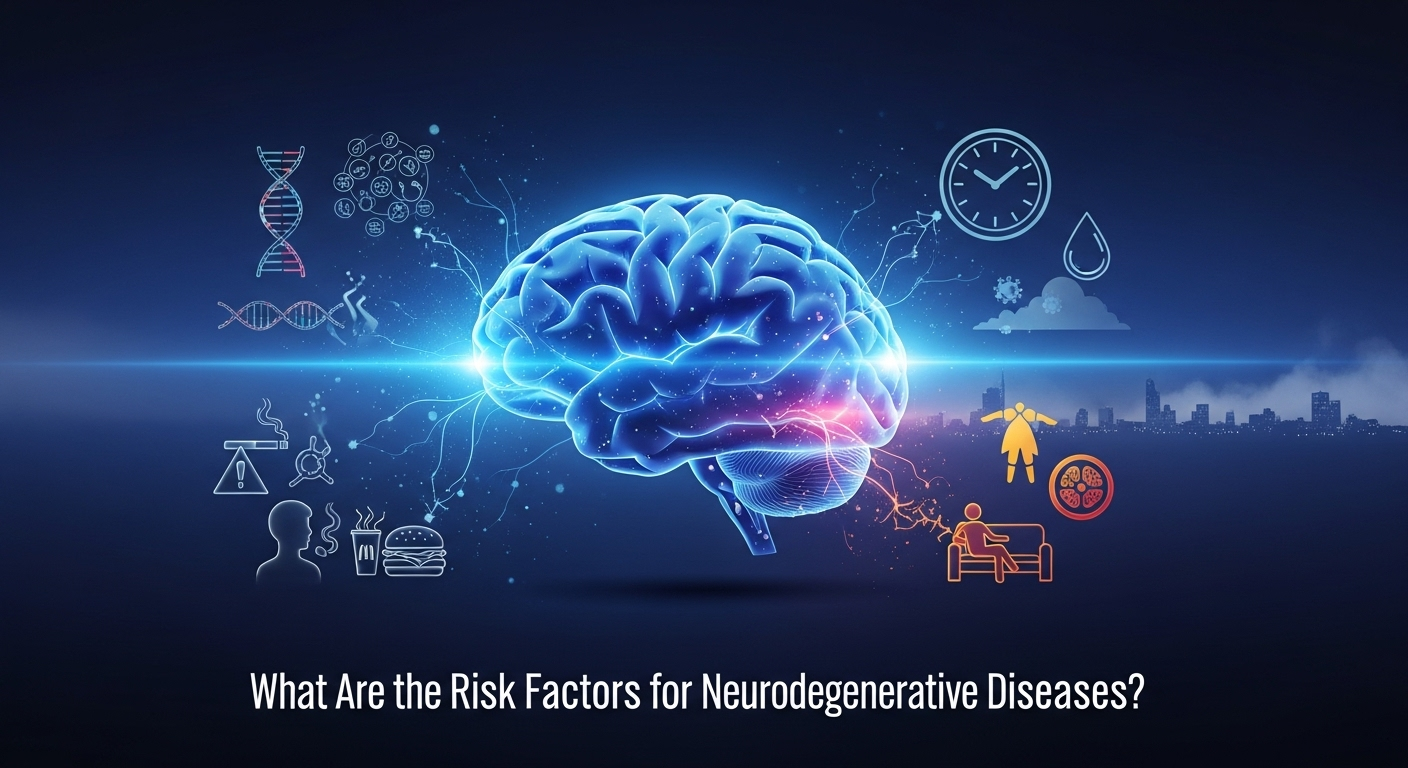Neurodegenerative diseases represent some of the most daunting challenges in modern medicine, stealthily eroding the very essence of who we are—our memories, our movements, and our cognitive abilities. Conditions like Alzheimer's, Parkinson's, and Amyotrophic Lateral Sclerosis (ALS) are characterized by the progressive loss of structure or function of neurons in the brain and spinal cord. While the exact causes of these diseases often remain elusive, a growing body of scientific research has illuminated a complex web of contributing factors. The journey to understanding these conditions begins with a clear-eyed look at the risk factors for developing neurodegenerative diseases, which span a spectrum from our genetic blueprint to our daily lifestyle choices. This knowledge is not just academic; it is empowering, offering pathways to potential risk reduction and a deeper appreciation for brain health. Understanding Neurodegenerative Diseases: A Foundation Before delving into specific risk factors, it's crucial to understand what neurodegenerative diseases are and what they have in common. At their core, these conditions involve the gradual and irreversible death of nerve cells, or neurons. This loss of neurons leads to a decline in cognitive and/or motor functions. The specific symptoms a person experiences depend largely on which parts of the brain or nervous system are affected. For example, the death of dopamine-producing neurons in the substantia nigra of the brain leads to the characteristic motor symptoms of Parkinson's disease, while the accumulation of protein plaques and tangles in the cortex is the hallmark of Alzheimer's disease. A common theme across many of these disorders is the misfolding and aggregation of proteins. In a healthy brain, proteins are folded into specific three-dimensional shapes to perform their functions correctly. In neurodegenerative diseases, certain proteins—such as amyloid-beta and tau in Alzheimer's, or alpha-synuclein in Parkinson's—misfold and clump together. These aggregates are often toxic to neurons, disrupting cellular processes, triggering inflammatory responses, and ultimately leading to cell death. This cascade of events unfolds over many years, often decades, before the first clinical symptoms become apparent. This slow, progressive nature is what makes identifying risk factors so vital. By the time a diagnosis is made, significant and often irreversible neurological damage has already occurred. Therefore, the focus of much current research is on prevention and early intervention. Understanding who is at higher risk, and why, allows for the development of targeted strategies. These strategies can range from lifestyle modifications and environmental adjustments to potential future pharmacological interventions aimed at slowing or halting the disease process before it takes hold. Unmodifiable Risk Factors: Genetics and Age Some of the most significant risk factors for neurodegenerative diseases are those we cannot change: our age and our genetic makeup. These are considered "unmodifiable" because they are an inherent part of our biology. While we cannot alter them, understanding their role is fundamental to assessing personal risk and is a cornerstone of scientific research into the mechanisms of these diseases. The Overwhelming Influence of Age Age is, by far, the single greatest risk factor for most common neurodegenerative diseases, including Alzheimer's and Parkinson's. The incidence and prevalence of these conditions increase exponentially with advancing age. For instance, the risk of developing Alzheimer's disease doubles approximately every five years after the age of 65. This strong association is not a coincidence; the aging process itself makes the brain more vulnerable to the pathological changes that underlie these disorders. Several age-related biological changes contribute to this increased vulnerability. These include a decline in the efficiency of cellular repair mechanisms, increased levels of oxidative stress and chronic low-grade inflammation (often termed "inflammaging"), and a reduced ability of the brain's waste clearance systems to remove toxic protein aggregates. Furthermore, decades of exposure to environmental toxins and the cumulative impact of lifestyle factors can take their toll. Essentially, the longer we live, the more opportunities there are for cellular machinery to falter and for damage to accumulate, creating a fertile ground for neurodegeneration to begin. The Role of Genetic Predisposition Genetics plays a crucial and complex role in determining an individual's risk. This role can be broken down into two main categories: rare, high-impact deterministic genes and common, low-impact risk-modifying genes. A very small percentage of cases, particularly for Alzheimer's and Parkinson's, are "familial" or hereditary, caused by mutations in specific genes that virtually guarantee the development of the disease, often at a much younger age. Examples include mutations in the APP, PSEN1, and PSEN2 genes for early-onset Alzheimer's. More commonly, genetics confers a predisposition rather than a certainty. The most well-known genetic risk factor for late-onset Alzheimer's disease is the Apolipoprotein E (APOE) gene. We all inherit two copies of this gene, one from each parent, in one of three variants: ε2, ε3, or ε4. The ε4 variant significantly increases the risk and lowers the age of onset for Alzheimer's. Having one copy of APOE4 can increase risk two- to three-fold, while having two copies can increase risk by up to 12-fold. It is important to remember, however, that APOE4 is a risk factor, not a deterministic gene; many people with this variant never develop Alzheimer's, and many who have Alzheimer's do not carry the APOE4 variant. Lifestyle and Modifiable Risk Factors: Taking Control While we can't change our genes or stop the passage of time, a large and growing body of evidence shows that lifestyle choices have a profound impact on brain health. These "modifiable" risk factors are areas where individuals can take proactive steps to lower their risk of developing a neurodegenerative disease. The recurring theme is that what is good for the heart is also good for the brain. The Critical Link to Cardiovascular Health The brain is an incredibly metabolically active organ, consuming about 20% of the body's oxygen and glucose despite being only 2% of its weight. This requires a robust and healthy blood supply, delivered through a vast network of blood vessels. Consequently, any condition that damages the vascular system can also harm the brain. Midlife hypertension (high blood pressure), high cholesterol, and type 2 diabetes




